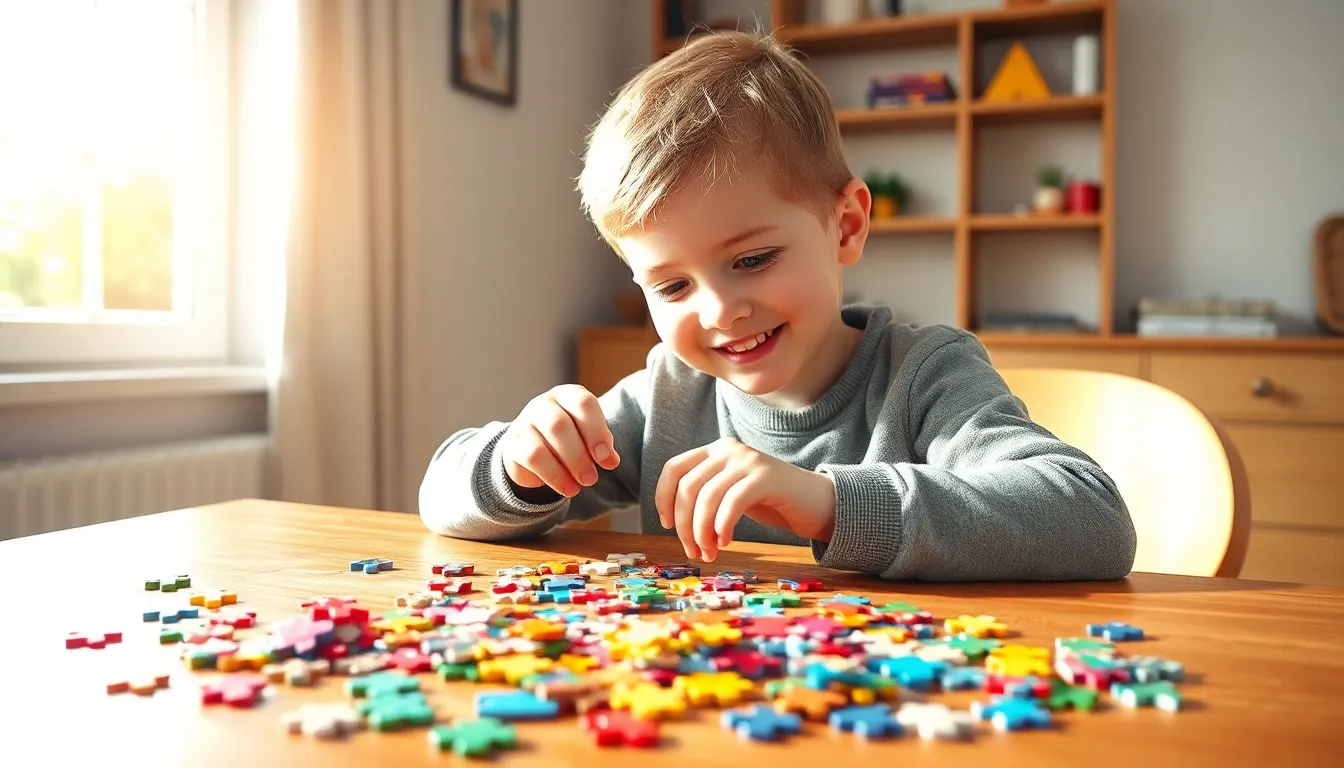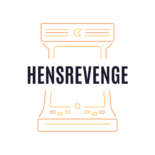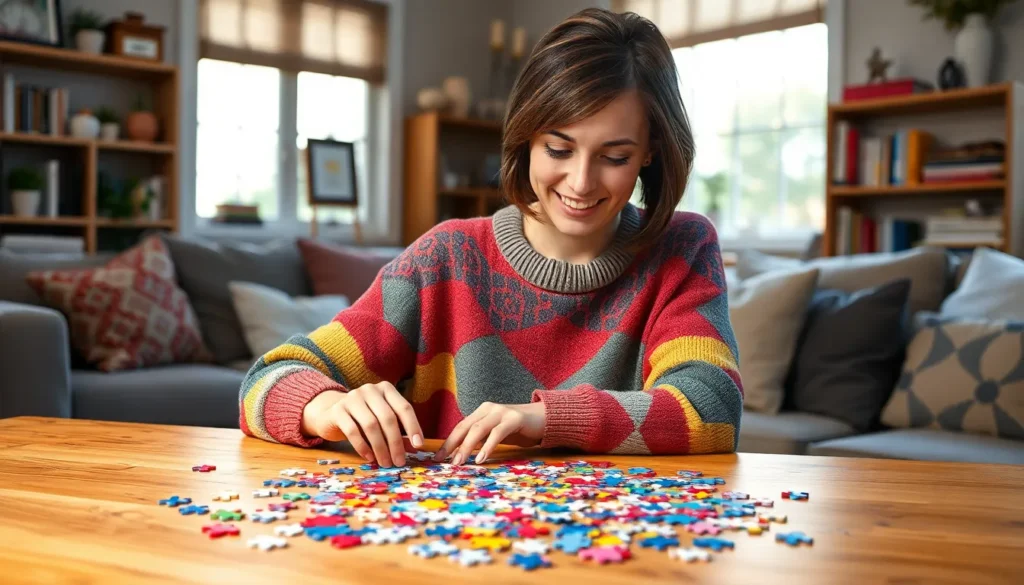In a world filled with screens and distractions, puzzle toys stand out as the ultimate brain workout disguised as fun. These little gems not only challenge the mind but also keep boredom at bay, making them a must-have for kids and adults alike. Who knew that twisting, turning, and fitting pieces together could be the secret to unlocking creativity and problem-solving skills?
Puzzle Toy
Puzzle toys engage users in solving challenges, promoting mental activity and creativity. These toys serve crucial purposes across various age groups by enhancing cognitive abilities and providing entertainment.
Definition and Purpose
Puzzle toys consist of items designed to challenge problem-solving abilities. They stimulate critical thinking and encourage users to develop strategies. A variety of shapes, colors, and difficulty levels appeal to many interests and skill levels. Parents often choose puzzle toys to aid in their children’s development. Adults find these activities beneficial for reducing stress and maintaining mental sharpness. Therefore, puzzle toys support both fun and learning without distractions.
Types of Puzzle Toys
Puzzle toys come in numerous types, catering to different audiences and preferences. Jigsaw puzzles involve assembling pieces to reveal an image. Rubik’s cubes challenge users to align colors efficiently. Brain teaser toys test cognitive skills with intricate shapes and patterns. Building sets encourage creativity while promoting spatial awareness. Educational puzzle toys target learning by focusing on numbers, letters, or STEM concepts. Each type fosters unique skills while providing enjoyable experiences.
Benefits of Puzzle Toys

Puzzle toys offer a range of advantages for users of all ages. Engaging with these toys promotes growth in various skills essential for daily life.
Cognitive Development
Cognitive development significantly benefits from puzzle play. Problem-solving abilities sharpen as individuals confront challenges presented by these toys. Critical thinking skills also improve, fostering better decision-making. Studies show that children who regularly play with puzzles score higher on cognitive assessments. Engagement with different shapes and colors enhances spatial awareness, crucial for understanding the world around them. Adult users often experience a boost in mental agility and creativity by tackling complex puzzles, making cognitive growth a key advantage of puzzle toys.
Motor Skills Improvement
Fine motor skills get a noticeable boost through puzzle interactions. Hand-eye coordination strengthens as users manipulate pieces into place. Children particularly learn to control their movements, which aids in various activities like writing and drawing. Grasping, turning, and fitting puzzle pieces require dexterity, promoting muscle development in hands and fingers. Adults benefit too, as engaging with intricate designs keeps motor skills sharp, contributing to overall physical health. Regular practice with puzzles allows for a fun way to develop and maintain these essential abilities.
Stress Relief
Stress relief emerges as a significant benefit of puzzle toys. Immersion in a challenging puzzle can divert attention from daily pressures, providing a mental escape. Users often find the repetitive, focused nature of puzzle-solving soothing, which combats anxiety. Research indicates that engaging in this activity releases dopamine, promoting feelings of happiness and satisfaction. Adults frequently use puzzles as a means to unwind after a long day, while children also gain coping skills for handling frustration. Overall, puzzle toys serve as valuable tools in managing stress effectively.
Popular Puzzle Toy Brands
Numerous brands specialize in puzzle toys, each offering unique products that cater to various age groups and skill levels. Below are three notable brands known for their quality and innovative designs.
Brand A
Ravensburger is a leader in the jigsaw puzzle market, renowned for its high-quality materials and engaging designs. With a wide range of themes from landscapes to popular characters, Ravensburger provides options for all ages. Their puzzles often feature premium cardboard and linen-structured paper to enhance durability and visual appeal. Many users praise Ravensburger for the precision of their pieces, ensuring a perfect fit every time. This brand frequently receives top ratings across multiple platforms, reflecting its commitment to quality and customer satisfaction.
Brand B
Rubik’s Cube stands out as an iconic brand that revolutionized the puzzle world. Originating in the 1970s, the Rubik’s Cube challenges users with its colorful and complex structure. Each twist and turn stimulates critical thinking and improves spatial awareness. Many enthusiasts engage with this cube in competitions, highlighting its enduring popularity. The brand continuously innovates, introducing new designs and variations, making it accessible for both beginners and advanced solvers alike.
Brand C
Melissa & Doug excel in the educational toy market, especially with their puzzle offerings for younger children. Their wooden puzzles are designed to be durable and safe for little hands. Often featuring vibrant colors and engaging themes, these puzzles help develop fine motor skills and cognitive abilities. Parents appreciate the educational value associated with Melissa & Doug, as many of their puzzles encourage creativity and imaginative play. The brand’s commitment to quality and child-friendly designs has made it a favorite among families worldwide.
How to Choose the Right Puzzle Toy
Selecting the right puzzle toy involves understanding several key factors, including age appropriateness, difficulty level, and material safety.
Age Appropriateness
Consider age when choosing a puzzle toy. Different age groups require specific designs to match their developmental stages. For instance, toddlers benefit from larger pieces that enhance grip, while older children may enjoy more complex structures that challenge their critical thinking. Adults seeking stress relief through puzzles often lean toward intricate designs that demand both focus and creativity. Evaluating a puzzle’s age rating ensures the chosen toy aligns with the user’s capabilities and interests.
Difficulty Level
Evaluating the difficulty level is crucial for maximizing engagement. Puzzles vary significantly in complexity, with beginner options available for newcomers and advanced challenges suited for seasoned enthusiasts. Users can assess the number of pieces and assembly instructions to determine difficulty. Selecting the right level prevents frustration and promotes a rewarding experience, allowing individuals to gradually increase their skills over time.
Material Safety
Prioritizing material safety is essential when selecting puzzle toys, particularly for young children. Opt for puzzle toys made from non-toxic materials and free of sharp edges to ensure safe play. Checking for compliance with safety standards helps confirm that products pose minimal health risks. Reputable brands often provide detailed information about their materials, reinforcing their commitment to safety and quality. By focusing on these aspects, buyers can choose puzzle toys that offer enjoyment without compromising safety.
Conclusion
Puzzle toys provide a unique blend of entertainment and cognitive development. They engage users of all ages in critical thinking and problem-solving while offering a fun way to relieve stress. With various types available there’s something for everyone whether they’re looking for a challenging brain teaser or an educational tool for children.
Choosing the right puzzle toy can enhance the experience and maximize benefits. By considering factors like age appropriateness and difficulty level, individuals can find the perfect match to stimulate creativity and mental agility.
Embracing puzzle toys not only enriches playtime but also fosters essential skills that contribute to overall well-being. They’re more than just toys; they’re valuable tools for growth and enjoyment in today’s fast-paced world.

